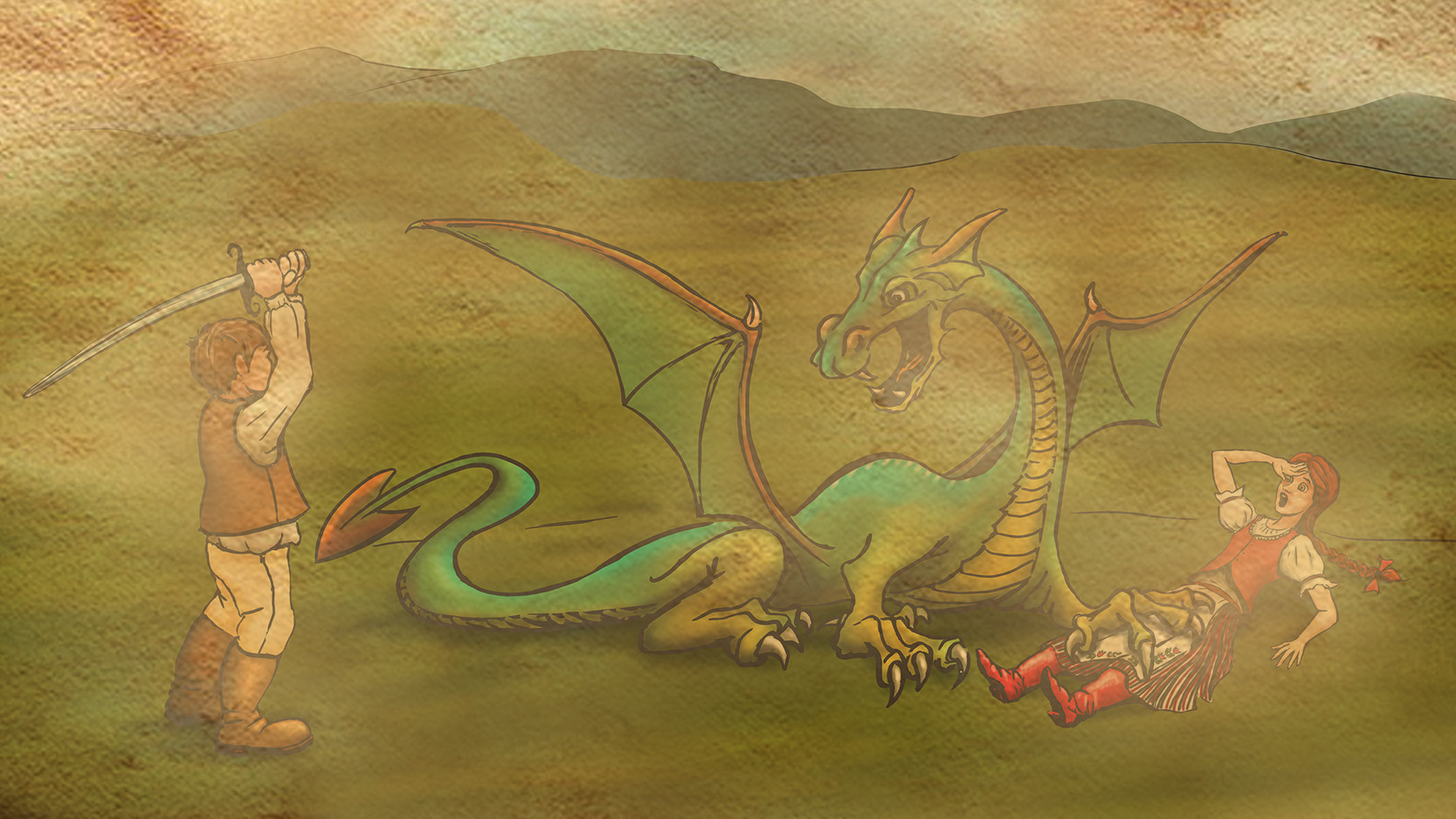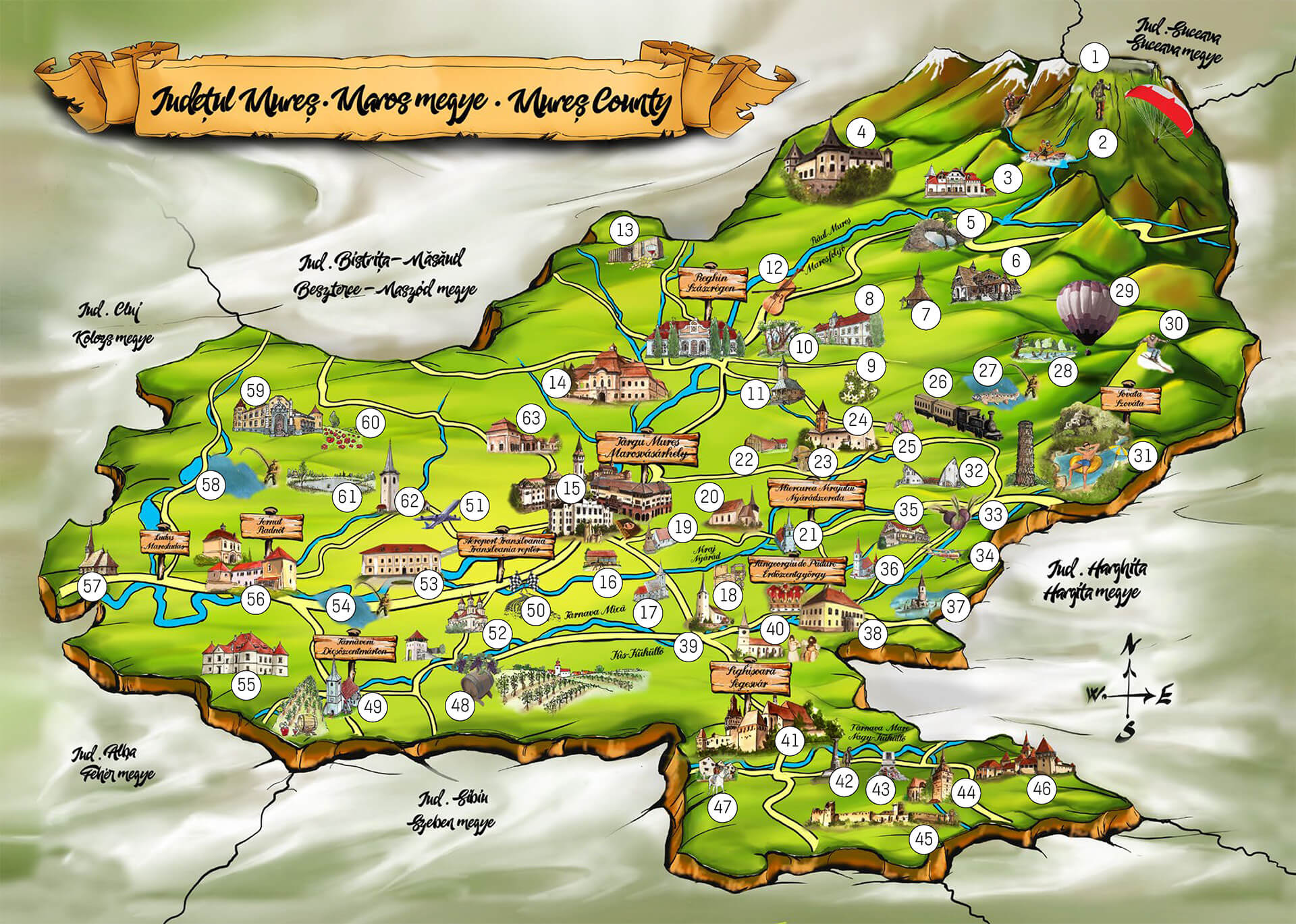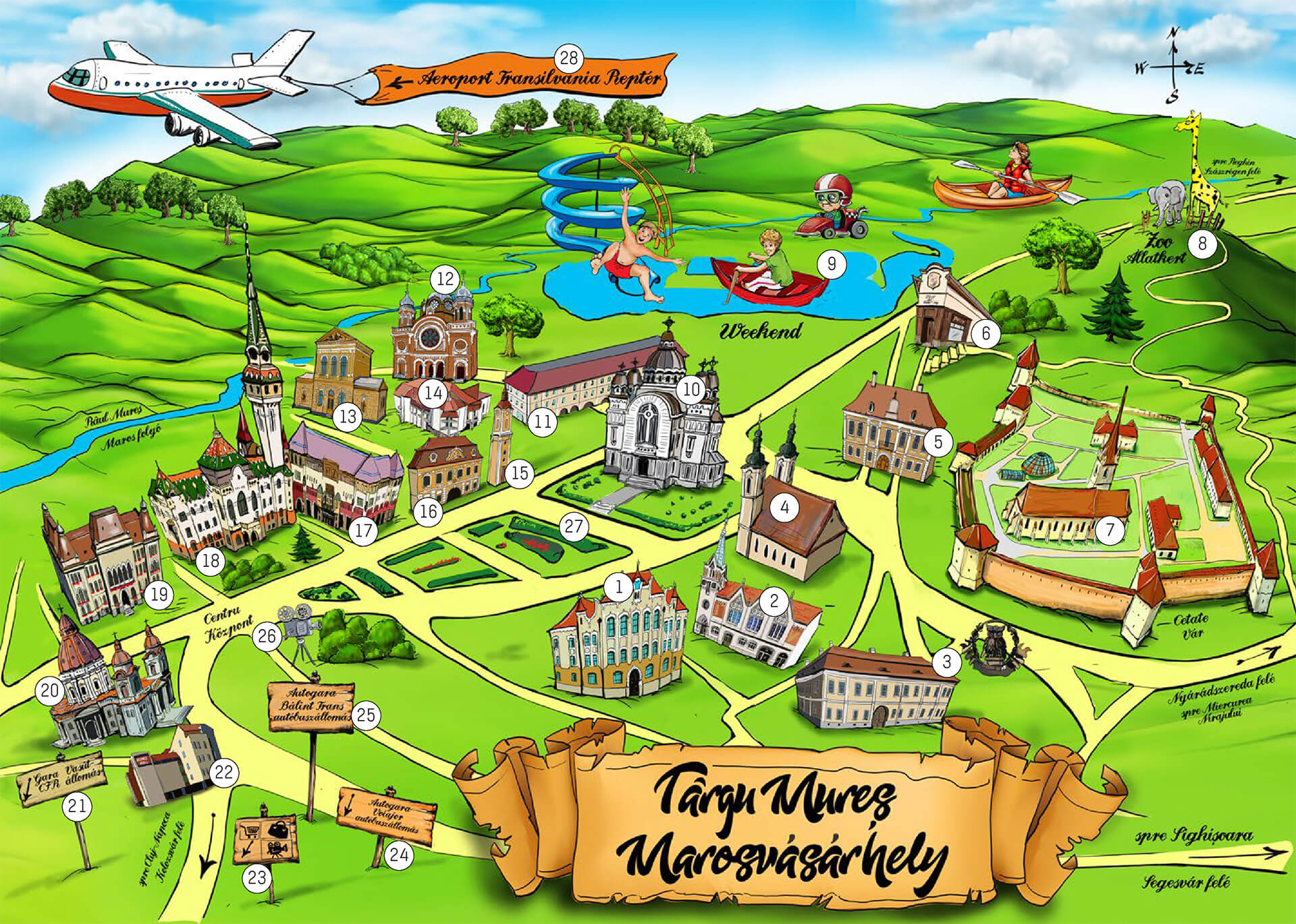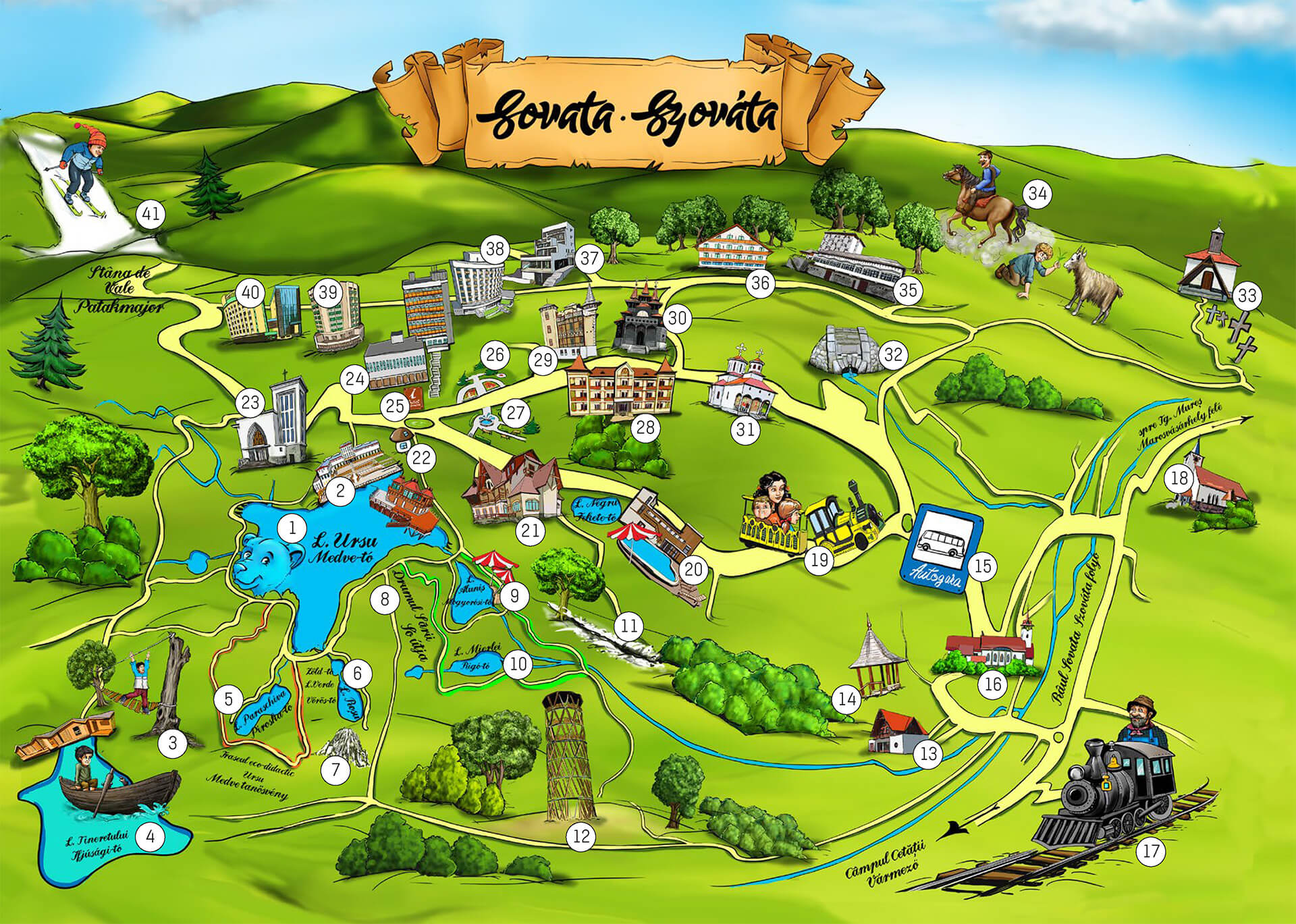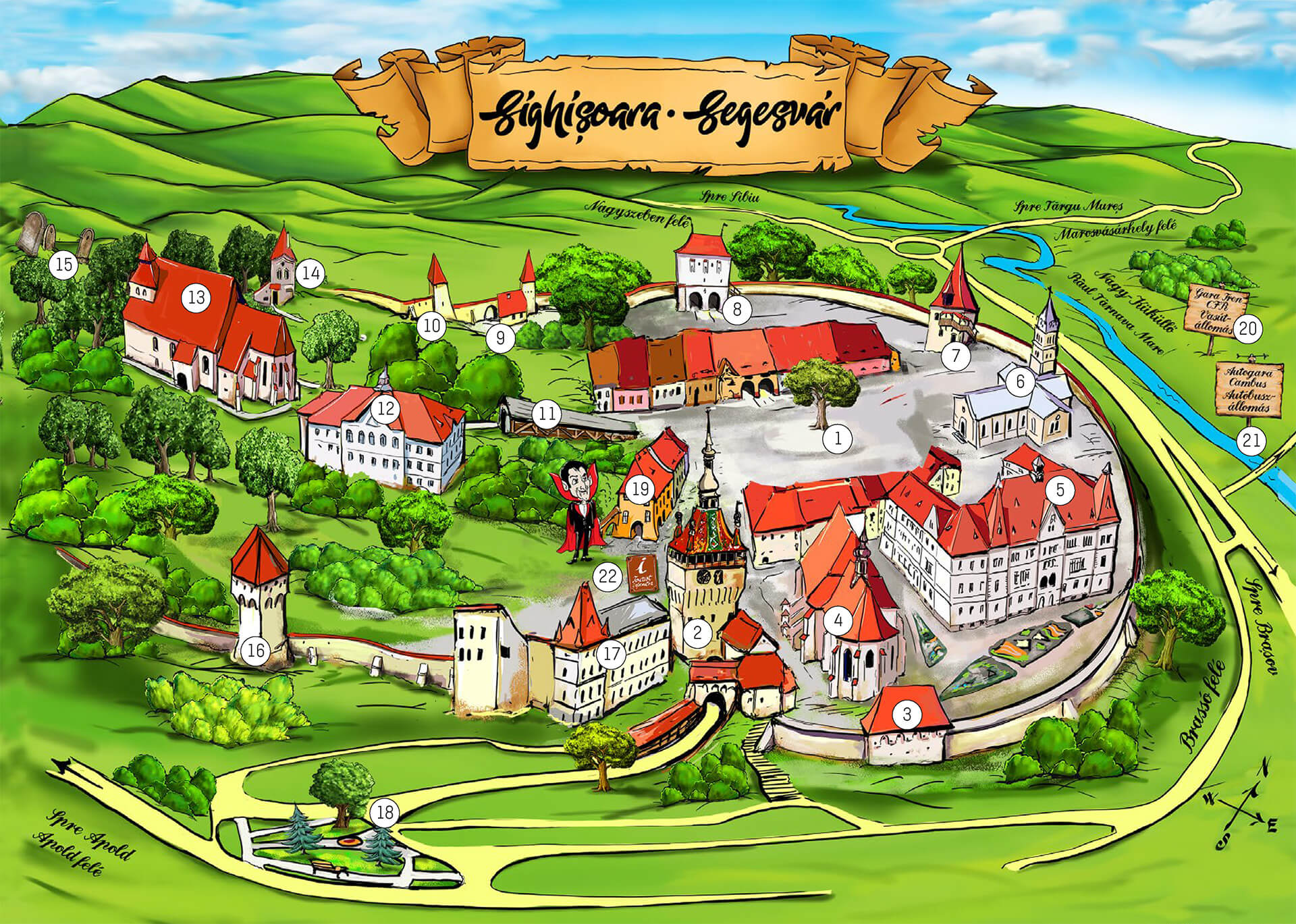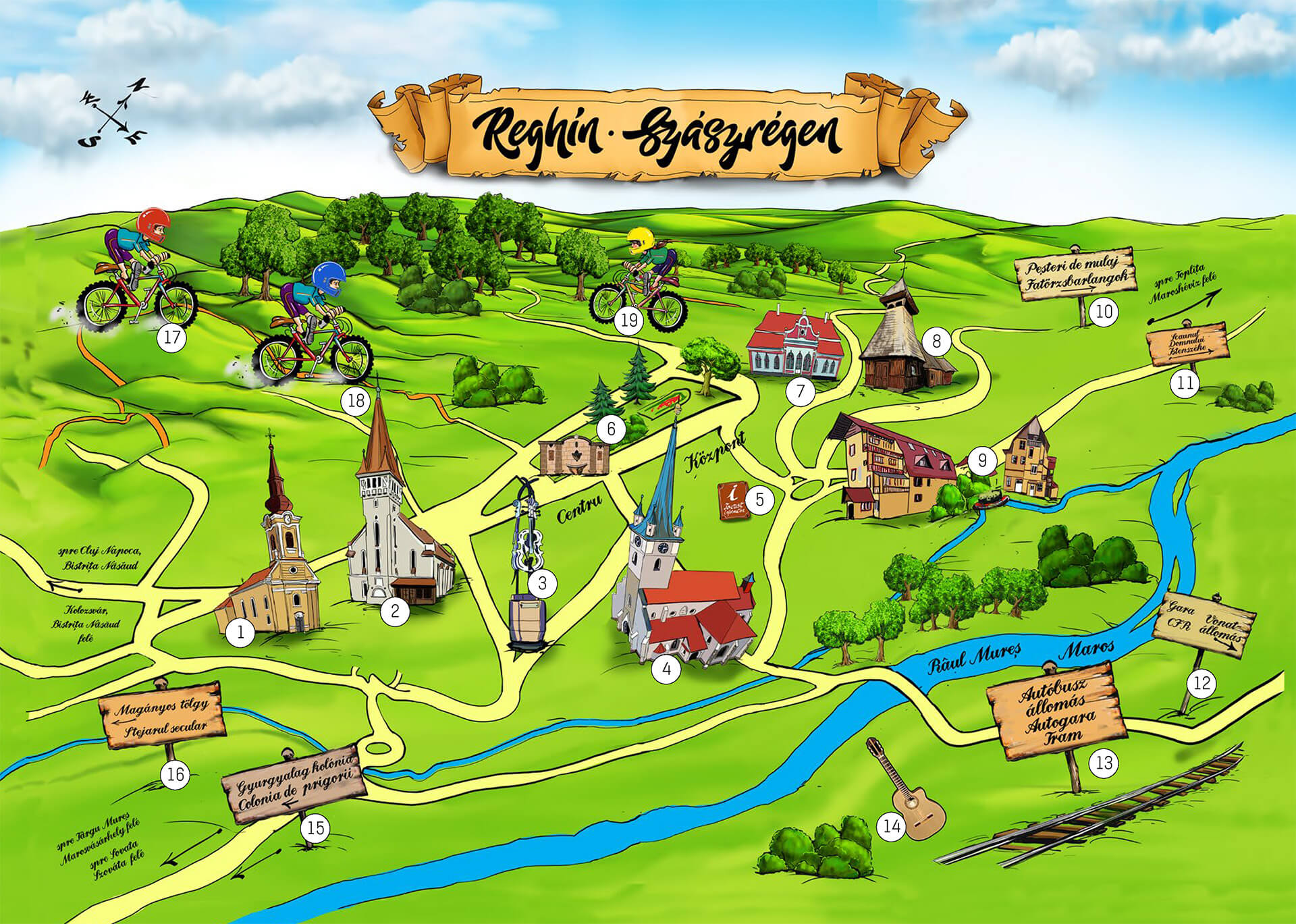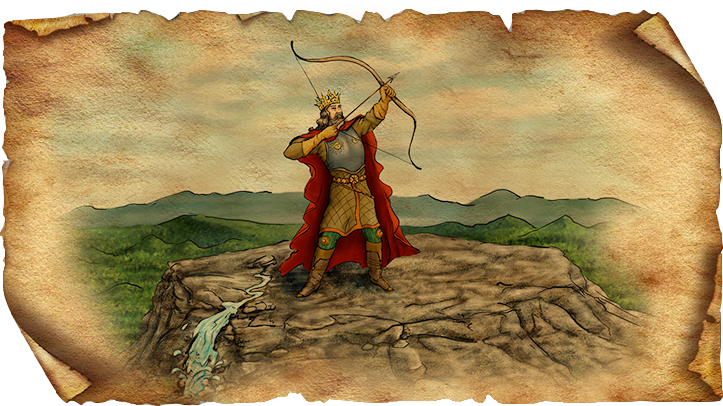
God's Chair -- Călimani Mountains
This chair-shaped peak rises up to the sky in the south-western part of the Kelemen/Călimani Mountains. It is called the Seat of God, as folk tradition says that God rested here after having created the beautiful mountain ranges, the valleys of the countryside, the river-bed of Mureș and after He populated this countryside. It is said that this land was also one of the favorite hunting places for King St. Ladislas.In fact, God’s Chair is a mountain glade surrounded by andesite rocks, from far similar to a chair or a coffin.It is a hard trial for nature lovers to climb onto God's Chair, but the sight that comes to us compensates for all the efforts. After Deda Bistra, to the East, beyond the Bistra river, about at 7-800 meters northwards there is a blue tourist mark, which leads to the peak. Hikers have to overcome the 900 m altitude gain during about four hours of walking. Mureș river separates the two volcanic mountain ranges: Gurghiu and Călimani Mountains. In some areas, only the river, the road and the railway lie in the valley, the mountains are covered by forests. This is a real heaven on earth for adventurous and experienced hikers, as they can discover wonderful natural sights. Climbing the hills, mountains and hiking trails of the countryside is an exciting challenge for visitors. Naming God's Chair as being a mountain peak is perhaps not the right choice, as hikers arriving there will discover an extensive glade. Its rim is steep and dangerous, but the landscape is breathtakingly beautiful. It seems as if God, who made this countryside so enchanting really was there and even He was overwhelmed by His work.
Learn more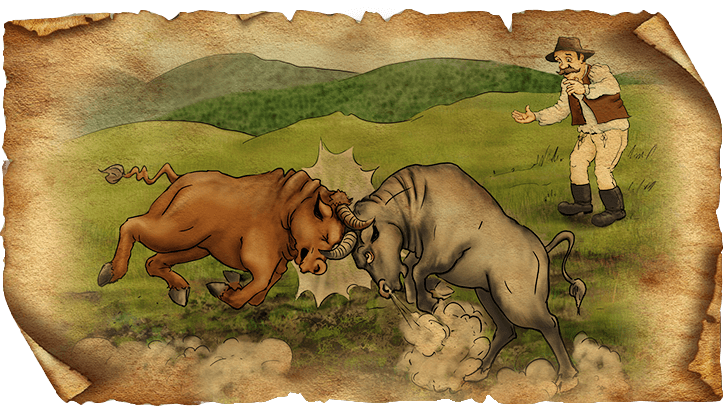
Fickó - Fițcău, Aluniș, Morăreni
In the picturesque valley of Maros / Mureş, not far from Deda, lies a small town in the direction of Szászrégen / Reghin, which, according to a legend, was named when the villagers made two bulls fight. A farther part of Monosfalva wanted to split away from the settlement, people almost got into a fight with each other, but for their peace the old men advised the two parties to choose a bull each and their battle should decide on the fate of the village. So they did just that: the two bulls were confronted in the field, and the fight was won by the bull of the people wanting to become independent. According to the folk tale, the stronger bull was called Fickó, and the separated settlement was named Fickó and Fickópatak out of respect for the winner bull.The Maros Valley, from Deda to Szászrégen, abounds in natural sights – not just on the surface, but also under the ground, as there are several so-called mold-caves in the area. The Transylvanian basin of today was a sea tens of thousands of years ago, and the Kelemen / Calimani, Görgényi/Gurghiu and Gyergyó/Giurgeni mountains emerged due to the volcanic activity of this sea. The Giurgeni Basin is connected to the Transylvanian Basin by the Maros Valley, and in the surrounding area were formed the lakes of Ratosnya, Palotailva, Göde. However, these dam lakes have been filled with volcanic deposits over time, thus forming such formations as the Hétsziklák / Seven Rocks of Ratosnya, or the Szerecsen Rock of Szalárd and the Sólyomkő. All of these are worth a trip, and we cannot miss one of the most famous caves, the Hut of Ládás, which is well marked for hikers.The picturesque beauty of the landscape, its history, the lives of its inhabitants inspired many Transylvanian writers and poets, such as János Kemény, Albert Wass or Lajos Áprily. At the same time, there are plenty of folk legends that tell stories about the birth of different settlements, caves and natural sights – such as the story of a bull called Fickó, the name of which is remembered by a small village.
Learn more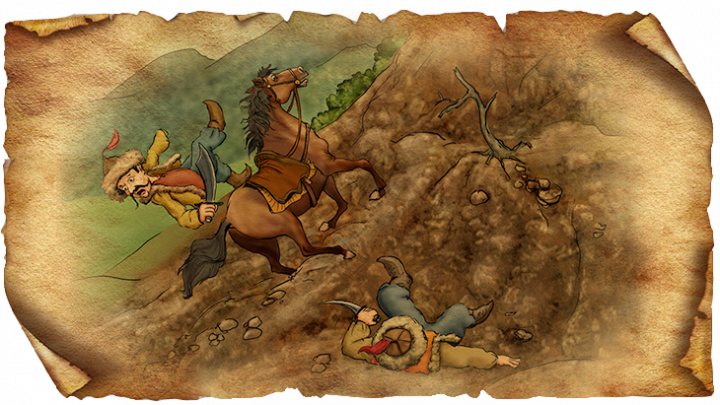
Tatar's pass - Vălenii de Mureș
The settlements along the Upper Maros were plundered by the Tatars for centuries, but sometimes they were stopped by the Szeklers who joined their forces. For example, in Disznajó, the folklore believes that it was necessary to escape from the Tatars many times, now and then in the last moments – it happened that a rider brought the news that foreign troops were already in the neighboring settlement Idecs / Ideciu. Around 1420, near the settlement was built a castle, the remains of which can still be seen today. In spite of the strong walls of Maros, built with hot lime, the Tatars conquered it, and according to the folk myth, only the mistress of the castle remained as messenger who, hiding in the chimney, escaped from the enemy. The men neighboring Magyaró / Aluniș hurried to help the people in Disznajó. They managed to make the Tartars flee with a trick: there was a woody hillside nearby, the attackers chased the Szeklers, but on the zigzag, steep hillside, using the martial art of the ancient Hungarians, they turned against the Tatars and made them retreat. The Tatars, without knowing the field, fled until they reached the neighboring steep slope. The people from Magyaró let them flee, and the steep hillside near Disznajó was named Tatárhágó / Tatar pass in memory of the event. The region of Upper Maros is mostly covered by forests. This part of the Maros shore was once a royal castle estate, the center of which was the nearby Mures. The local forests in the Middle Ages were rich in wildlife - as they are today, they were an important hunting ground. Disznajó and its surroundings changed owners several times over the centuries, but fortunately several areas remained untouched: large forests, pastures, glades are wonderful hiking tours to this day, being popular destinations for group trips. There are few good quality lands near the village. In the settlement, animal husbandry became more common, because oak forests, pastures, glades, forests and mountain streams with clear water made this possible. The other main source of livelihood was, of course, forestry: the rafting on Maros has a long tradition, which dates back to the 19th century. The name of the village is believed to be of Bulgarian origin, the word "ná desznájá beregá", that is to say, on the right bank, even though the locals tell a Hungarian story: a person once suggested that the village should have a distinguished, ornate name, and the others they answered "well." The settlement is abundant in speaking names: for example, the Togát Street originates from the fact that the Patócsy family built a fish pond or dam for the regulation of the lake water supply. Another interesting feature of the village is Sóskút: the salt supply caused difficulties for the locals, so the water was transported from the salt water well at the boundary of the settlement – it was used for porridge cooking and cabbage storing. Medieval fresco fragments can be seen on the walls of the Reformed Church in Disznajó, which was expanded and rebuilt in 1888, and they were probably made in the 14th century. There was also a tombstone from 1586 - from the times when the Tatars invaded small settlements like Disznajó. Today, during a forest hike, we no longer encounter fleeing Tatars or the grey-dressed mistress of the castle, but the great number of tourists being interested in the region. Instead of sword fighting, the hillside is full of cheerful birds, a place of the Szekler victory long ago.
Learn more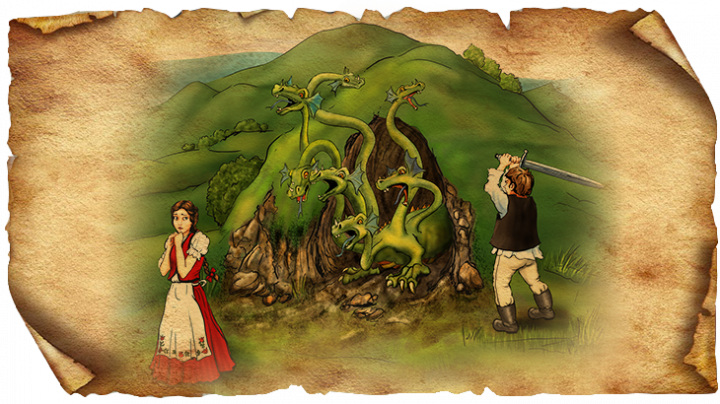
Zaszpad's treasure cave - Aluniș
The area of Magyaró, situated north-east of Szászrégen / Reghin, was probably inhabited by Saxons centuries ago – as the name of the hill called Zászpád suggests, which can be a modified version of Szászpad. The mountain was believed to have been named after the local Saxon king who had a beautiful daughter. The girl was kidnapped by a dragon living in the depths of the mountain, and valiants, knights, princes came in vain from all places, none of them could defeat the beast. Finally, an artful shepherd of Magyaró appeared, asking the king only to give him the brightest sword, and to post the most beautiful daughter of the area at the cave entrance for distraction. As the dragon rushed out from the cave, the hiding lad cut off all its seven the heads with one stroke. Being grateful to the shepherd, the king offered his daughter as wife for the shepherd – they danced so much during the wedding, that all the trees were dumped, and there were no trees at the top of the Szászpad hill. According to another legend, the Tatars were also settled in Zászpád, and the robbed treasures were kept in a cave sealed with a iron grate. Although the Tatars were expelled from Magyaró's surroundings, their mysterious treasures may have been secured with curses, as all of the treasure hunters were completely absorbed by the earth. People were afraid of the place for a long time because it was believed that people entering the iron door never returned. There is also a belief that a lion lives in the cave: if someone throws a stone into the mouth of the cave, a terrible growl can be heard. The village of Magyaró probably got its name from the nearby hazel bushes. The castle actually existed: the so-called Mentővár / Rescue fortress was built in the 1300s. For centuries, the inhabitants of Upper Maros Basin fled there, as they suffered not only from the devastation of the Tatar hordes, but also from other dangers. Visitors of the village can still see the remains of the foundation wall of the castle, easy to be recognized. The small settlement is surrounded by forests, fields, pastures and streams with abundant water, so the area is an excellent hunting area. According to tradition, lords, crown princes regularly hunted in the forests around Magyaró, of course, except from the local landowners. The church in Magyaró is considered as an important monument, since its sanctuary was built in the 15th century. It was broadened over the centuries, but in 1801 it was damaged by a fire. It guards a very valuable piece of art: a tin canna from 1620 and a bell made in 1660. If we climb up from Magyaró in good weahter to the 1241 meter high Zászpád, we can see from the top even Marosvásárhely / Târgu Mureș. Do not be afraid, because the offsprings of the legendary shepherd are still grazing their sheep there, and there are no Tatars or beasts in the cave.
Learn more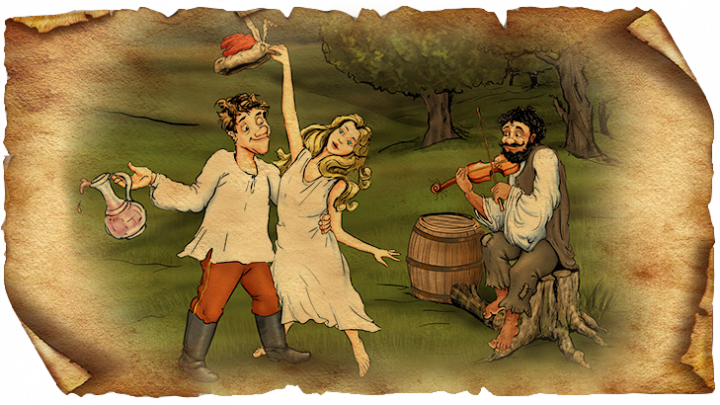
Old beliefs from Brâncovenești
One of the most impressive buildings of the Upper Maros Basin is the Castle of Marosvécs - with many legends, myths and folk beliefs related to its construction and history. According to one of the myths, the first inhabitants of the castle were probabl giants. These creatures were so huge that when they asked for a sieve from their fellows living in the Castle of Zászpád near Magyaró / Aluniș, one and a half hours away, they were handed over to them with one move. Beliefs wang their way about the fact that there were more tunnels on the hillside of Vécs, one of them connects the castle with the Holtmaros fortress on the other side of the river. There were fairies on the meadow and in the forest under the castle, who always came up at midnight and bathed in the stream called „Gödörhát”. The folk tradition says about the nearby Alsóidecs / Ideciu de Jos that treasures were hidden in Leányvár / Girl Castle, also known as Spitzburg (in German, "Peaky Castle"). In the 13th century Saxons settled here - they thought the giants had left an immeasurable treasure in the stomach of the hill after they disappeared. The Marosvécs edifice, known as the Kemény Castle today - unlike a good part of the beliefs surrounding it - is very real: besides the fact that it is one of the cradles of Hungarian literature in Transylvania, it is one of the oldest monuments in Mureş county. It was built in the middle of the 15th century, and the former fortress was replaced by the castle. Its actual form was won in the following century - the Kemény family, giving prince to Transylvania, came into the possession of the castle and estate after 1648, which remained in its possession for decades except from communism. In the famous castle garden, the Helikon literary meetings were held in the 1920s and '30s, led by János Kemény, writer and protector. The famous stone table, which was designed and carved by Károly Kós, in memory of Aladár Kuncz, still stands there today. János Kemény, a writer and his wife, was buried near the stone table, and in 2000, the ashes of Wass Albert were placed near their grave. Another place of interest is the Reformed church without a tower in the neighborhood of the castle. Built by the Kemény family in 1727, art historians call it one of the most unified Rococo spaces in Transylvanian church architecture. For tourists visiting the castle, the church is also a sight worth seeing. There are no giants in the castle and on the hillside of Marosvécs - but the ghosts of the giants of Transylvanian Hungarian literature can be somewhere in the Kemény Castle and in its garden where so many lofty words and thoughts were uttered.
Learn more